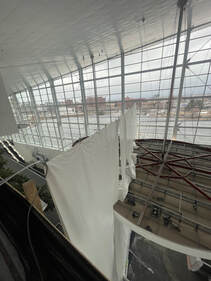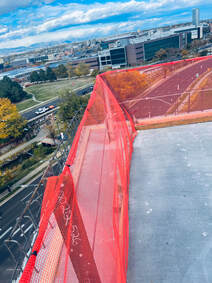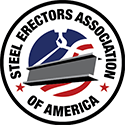|
At times we can get so focused on protecting ourselves on the jobsite that we forget about the risks the public could potentially be exposed to if they are near a jobsite. These risks include dropping a bolt onto a busy sidewalk from a high-rise structure in an urban environment, a 300-foot lattice boom lifting or lowering near public areas a block away, or torch cutting and welding on an existing office building full of people who don’t even know you are there. These are all real-life scenarios and challenges we face every day, but which can catch the public by surprise. Here are three ways to reduce risk to the public.
 Physical Barriers One way to keep the public safe is by preventing them from passing by or through a construction site. Setting up “hard barricade” boundaries is the best way to keep unauthorized people out of danger. Signs should be posted on these boundaries warning people not to enter the construction area. When arc welding, use shields made of noncombustible or flameproof material to protect everyone in the vicinity from direct rays of the arc. [29 CFR 1926.351(e)]  Dropped Object Prevention When it comes to steel erection, usually a simple fence on the ground isn’t enough protection. Dropped objects accounted for over 240 deaths in 2019, according to the Bureau of Labor Statistics. The goal is to prevent falling objects in the first place. The use of tool lanyards and catch nets are the best ways we can protect the public from dropped objects. When guard rails are used, they must have sufficient toe boards at least 3½ inches in height from top edge to floor level, and no more than a ¼ inch gap at the bottom. It must be capable of withstanding a force of 50 pounds applied in any direction. It’s always best practice to add mesh fencing from the top guard rail to the toe board for extra dropped object protection. Preventing Exposure to Equipment Another issue that affects public safety is exposure to equipment. This includes the operation of cranes, forklifts, aerial lifts, or other vehicles that could get caught between and struck by hazards. First, properly maintained equipment is far less likely to experience a failure. Thorough inspections by an authorized person is critical to the maintenance process. Any safety issues must be reported immediately and the equipment should be taken out of service until it is fixed by a qualified person. Next, use spotters! Spotters should always be used when the operator’s line of sight is interrupted. How many spotters should you use when operating equipment in a high-risk area? As many as it takes! Spotters tend to put themselves in a caught between/ struck by hazard situation. The spotter should always place him/herself in a position that has a clear line of sight with the operator and direction of travel while using good body positioning.
What It All Comes Down To The most effective way to keep the public safe starts with in depth planning, detailed pre-construction meetings, and keeping our employees’ training up to date. Employees need to have a clear understanding of the hierarchy and be made aware of the procedures, materials, tools, and equipment available to them to support their efforts in creating a safer job site for the public and other workers. Great safety cultures have foundations built from both directions, top down and bottom up all connecting in a common goal. Resources: Guidelines for Establishing the Components of a Site-specific Erection Plan Protection of Pedestrians (ICC) Section 3306 Dropped Object Prevention This Safety Flash was contributed by Austin Reiner, Safety Manager, Derr & Gruenewald Construction Company, in cooperation with SEAA’s Safety Committee. It is designed to keep members informed about ongoing safety issues and to provide suggestions for reducing risk. Best practices are gathered from a variety of sources. They may be more or less stringent than individual corporate policies and are not intended to be an official recommendation from SEAA. Always get approval and direction from your company officers on any new practice or procedure as these best practices may not work for all situations.
Everyone benefits when a worker avoids injury. Submit your ideas for Safety Flash to [email protected]. Comments are closed.
|


 RSS Feed
RSS Feed
